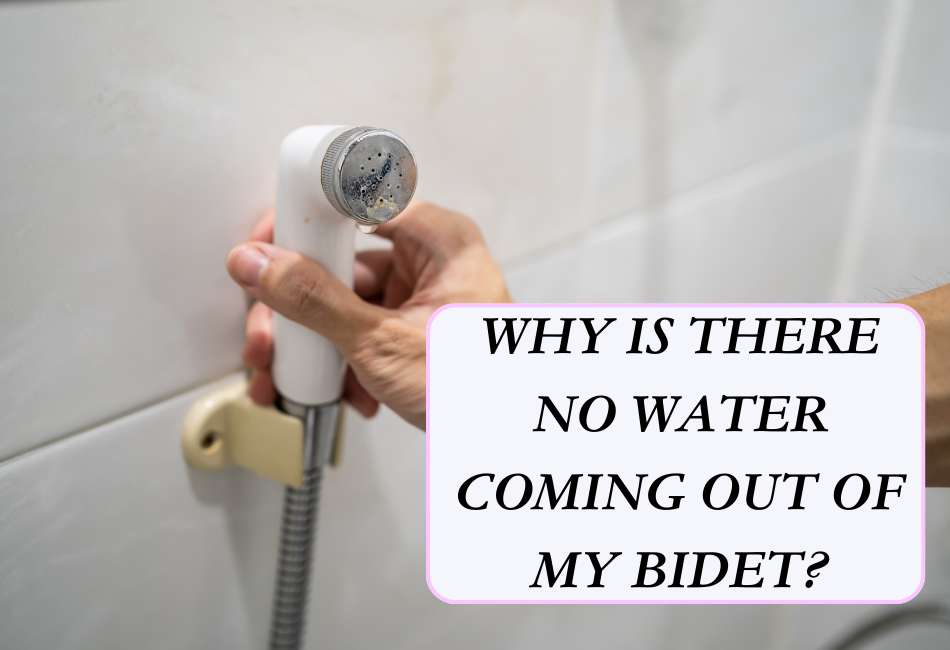Bidets are a bathroom fixture that has seen a significant surge in popularity in recent years. Originating from Europe, they are now becoming a common sight in bathrooms across the globe, thanks to their hygienic and environmentally friendly nature.
Crucial to their operation is the flow of water, which ensures an effective and refreshing clean. Yet, like all plumbing fixtures, bidets aren’t immune to malfunctions.
One common concern among users is the lack of water flow, which can impact the overall performance and usability of the bidet.
In this article, we will delve into why you might be facing issues with your bidet’s water flow and offer practical solutions to get it working optimally again.
1. Water Supply Issues
Check Water Shut-off Valve
Ah, the water shut-off valve. It might sound like a bit of a bore, but trust me, it’s the unsung hero of any plumbing fixture.
I recall a time when I was wrestling with a stubbornly dry bidet. After a few frustrating minutes, I realized I had completely overlooked the water shut-off valve!
It’s your first port of call when there’s no water flow – always check if it’s entirely open. If it’s not, twist it, and you might hear the sweet sound of water rushing through the pipes.
Ensure Water Pressure is Sufficient
Let’s talk water pressure. It’s a bit like that morning cup of coffee. Without enough pressure, your bidet is going to feel groggy and underperform.
There was an instance when my bidet felt more like a gentle summer breeze than the robust cleansing tool it should be.
The culprit? Low water pressure. So, be sure to check if your water pressure is sufficient. A simple water pressure gauge can give you the answers you need.
2. Clogged Bidet Nozzle
Common Causes of Nozzle Clogs
I love my bidet, but I’ll tell you, it demands a bit of TLC now and then. The major part of this is tackling the dreaded nozzle clogs.
These are usually caused by mineral deposits or, in less glamorous terms, limescale. I’ve often found a white or green buildup indicating a clog. Remember, if left unchecked, these can hamper the water flow in your bidet.
The Importance of Regular Cleaning
I cannot stress enough the importance of regular cleaning. It’s like going to the dentist. It’s an inconvenience, perhaps, but it prevents bigger problems down the line.
I’ve found that a regular nozzle clean-up can ward off any potential clogs and keep the water flowing freely. No one wants to deal with a full-blown clog, trust me!
3. Electrical Malfunctions
Regarding electronic bidets, things can get a smidge more complicated. You have heaters, sensors, and whatnot. These components can sometimes suffer malfunctions, leading to no water flow.
I’ve had my fair share of run-ins with faulty wiring and stubborn sensors. Not fun, but knowing what to look for helps a heap!
Troubleshooting Electrical Issues
Oh, the joy of troubleshooting! It can be a pain, but it’s part and parcel of owning an electronic bidet.
It’s a bit of a journey from checking the power source to ensuring the heater is functioning correctly. But rest assured, every electrical issue has a solution, and once you’ve found it, you’ll be back to enjoying the full functionality of your bidet.
4. Nozzle Positioning and Adjustment
Let’s talk about nozzle positioning, shall we? Now, this might not sound like the most exciting topic, but trust me, the position of that nozzle can make or break your bidet experience.
It’s too far back, and you’re not getting the desired cleanliness. It’s too far forward, and well, let’s say it’s unpleasant.
I once had a guest who could not stop raving about the “splashy adventure” they had in my bathroom. To save yourself from such “adventures”, always remember to check the nozzle position.
Steps to Adjust the Nozzle Angle
Adjusting the nozzle is simpler than you think. Usually, buttons or a dial on the bidet allow you to move the nozzle backward and forward until you find the position that’s just right.
Think of it as Goldilocks for your posterior: not too far or close, but just right.
Remember, what works for me, or your nosy neighbor, might not work for you. Everyone is built differently, so don’t be afraid to spend some time getting to know your bidet.
Most modern bidets even have memory features that remember your preferred settings. So go ahead, treat yourself to a personalized bidet experience!
Routine Maintenance for Bidet
1. Regular Cleaning Practices
- Cleaning Frequency Recommendations
It’s like brushing your teeth—you don’t do it just once and forget about it, right? Depending on usage, I recommend a thorough cleaning at least once a week. More if you have a large family or if your toilet sees a lot of traffic.
- Safe Cleaning Agents for Bidet Components
Stick to non-abrasive cleaners to avoid damaging your bidet. Harsh chemicals can deteriorate the bidet materials and interfere with its functionality.
I learned this hard when my favorite cleaner turned my shiny, new bidet into a dull, scratched mess. Lesson learned!
2. Inspection of Water Filters
Filters in bidets help screen out sediment and prevent clogs. If you’ve ever had a clogged nozzle, you know it’s not a pretty sight.
- How to Inspect and Replace Filters
Add this to your monthly to-do list. To inspect the filter, remove it from the bidet (don’t worry, every model has easy access), and check for any buildup or discoloration.
If it’s looking a bit worse for wear, replace it. Trust me, your bidet—and your bum—will thank you.
Professional Assistance
- When to Consider Professional Help
Just like that time when I tried to fix my laptop and ended up deleting all my saved files, there are moments when DIY just won’t cut it.
If you’ve explored all the usual suspects and your bidet is still not behaving, it might be time to call the cavalry.
Persistent water pressure issues, constant water leaks, or even unusual noises are all signs that your bidet might need a professional touch.
- Finding a Certified Technician
Looking for a good technician is like online dating: you’re trusting someone you’ve never met with, something very personal. Jokes aside, your best bet is to contact the manufacturer of your bidet first.
They often have certified professionals who know the product inside out. If that doesn’t work, don’t panic! Check out local reviews or ask for recommendations from friends or neighbors.
Conclusion
In the world of bidets, they’re often the usual culprits behind water flow issues – clogged nozzles, malfunctioning valves, or incorrect settings.
Remember when I thought my bidet was broken, but I had just turned the water pressure down too low? Yep, we’ve all been there.
If there’s one thing you take away from my ramblings, let it be this: routine maintenance is key. It’s like taking your car for regular oil changes.
It seems like a hassle, but it keeps everything running smoothly and can prevent bigger problems.
And lastly, there’s no shame in admitting when a problem is beyond your DIY skills. I know it’s hard to admit defeat, but sometimes it’s better to leave things to the pros. Your bidet will thank you!

